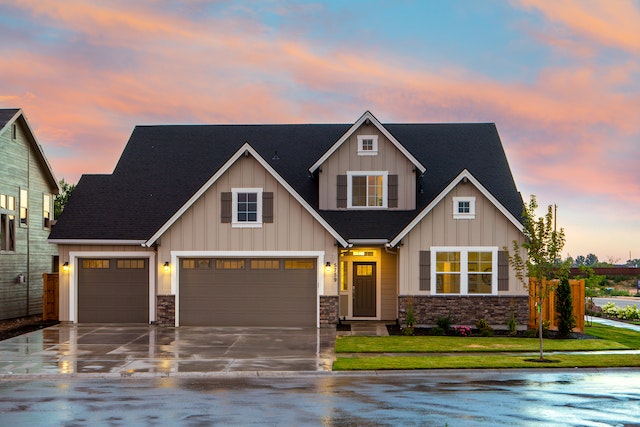The roof often tends to be overlooked when it comes to home maintenance. However, regular roofing maintenance by yourself or a professional roofing company is crucial for preserving the integrity of your home and ensuring its protection against the elements. Whether it’s spring showers, summer heatwaves, autumn debris, or winter snowstorms, each season brings challenges for your roof. This blog will provide essential roofing maintenance tips for every season, helping you keep your roof in top condition year-round.
Spring Roofing Maintenance Tips:
- Cleaning the gutters and downspouts: Remove debris, leaves, and twigs from your gutters and downspouts to ensure proper water drainage and prevent water damage.
- Inspecting for any winter damage: Look for signs of loose or damaged shingles, cracks in the roof, or leaks in the attic caused by the winter weather.
- Checking for loose or damaged shingles: Replace any loose or broken shingles promptly to prevent further damage during spring storms.
- Removing debris from the roof surface: Clear off any debris, such as branches or leaves, that may have accumulated on the roof surface during the winter.
- Trim any overhanging branches: Trim branches that hang over your roof to prevent them from rubbing against the shingles and causing damage.
Summer Roofing Maintenance Tips:
- Inspecting and repairing any damage from spring storms: Look for any signs of damage caused by spring storms, such as missing shingles or damaged flashing, and repair them promptly.
- Cleaning and treating moss or algae growth: Remove any moss or algae that may have started to grow on your roof. Use a gentle cleaning solution or hire professionals to handle the task.
- Checking for signs of blistering or cracking on the roof: Inspect the roof for signs of blistering or cracking, which can be caused by prolonged exposure to the summer heat. Address any issues promptly.
- Ensuring proper attic ventilation: Proper attic ventilation is crucial for preventing heat buildup and extending the lifespan of your roof. Check vents and make sure they are clean and unobstructed.
- Conducting a thorough roof inspection: Take the time to inspect your roof thoroughly for any signs of damage or wear. Pay close attention to the flashing around chimneys, vents, and skylights.
Fall Roofing Maintenance Tips:
- Clearing the roof and gutters of fallen leaves and debris: Regularly clean your roof and gutters to prevent clogs and water backup, which can lead to leaks and other damage.
- Inspecting and repairing any damage from summer storms: Check for any damage caused by summer storms, such as loose or missing shingles, and repair them promptly.
- Checking the flashing and seals around vents, chimneys, and skylights: Ensure that the flashing and seals around these areas are intact and properly sealed to prevent water infiltration.
- Removing overhanging tree limbs: Trim back any overhanging branches that could potentially damage your roof or act as a pathway for pests.
- Scheduling a professional inspection and maintenance: Consider hiring a professional roofing contractor to conduct a comprehensive inspection and perform any necessary maintenance before the winter season arrives.
Winter Roofing Maintenance Tips:
- Clearing snow accumulation from the roof: Safely remove any accumulated snow from your roof to prevent excessive weight and potential structural damage.
- Preventing ice dams through proper insulation and ventilation: Ensure your attic is adequately insulated and ventilated to prevent the formation of ice dams, which can lead to water leaks.
- Checking for signs of leaks or water damage inside the attic: Regularly inspect your attic for any signs of water leaks or damage, such as damp spots, water stains, or mold growth. Address any issues immediately.
- Removing icicles carefully: Use a roof rake or other specialized tools to carefully remove icicles hanging from the eaves. Avoid using sharp objects that can damage the roof surface.
- Monitoring the roof for any damage after winter storms: After winter storms, check your roof for any visible damage, such as missing or damaged shingles, and arrange for repairs as needed.
General Roofing Maintenance Tips:
- Regularly inspecting the roof for signs of wear and tear: Conduct visual inspections of your roof at least twice a year, and after severe weather events, to catch any signs of damage early on.
- Promptly addressing any leaks or damage: If you notice any leaks, water stains, or other signs of damage, address them promptly to prevent further deterioration and costly repairs.
- Maintaining proper attic insulation and ventilation: Ensure your attic has sufficient insulation to regulate temperature and prevent ice dams. Proper ventilation helps remove excess heat and moisture.
- Hiring a professional for regular inspections and maintenance: Consider scheduling professional inspections annually or biannually to have an expert assess your roof’s condition and perform necessary maintenance.
- Keeping a record of maintenance and repairs for reference: Maintain a log or file where you record the dates and details of maintenance tasks, inspections, and any repairs undertaken. This helps track the roof’s history and aids in future maintenance planning.
Conclusion:
Taking care of your roof throughout the year is vital for its longevity and your home’s overall protection. By following these roofing maintenance tips for every season, you can proactively address potential issues, prevent damage, and extend the life of your roof. Remember, when in doubt or for complex repairs, it’s best to consult with a professional roofing contractor. Make roofing maintenance a priority, and your roof will continue to serve as a reliable shield against the elements, keeping your home safe and sound.…

